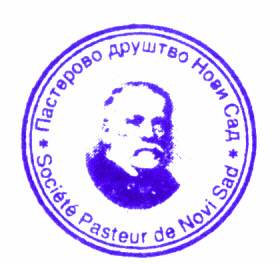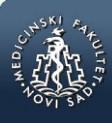md-medicaldata
Main menu:
- Naslovna/Home
- Arhiva/Archive
- Godina 2024, Broj 2
- Godina 2024, Broj 1
- Godina 2023, Broj 3
- Godina 2023, Broj 1-2
- Godina 2022, Broj 3
- Godina 2022, Broj 1-2
- Godina 2021, Broj 3-4
- Godina 2021, Broj 2
- Godina 2021, Broj 1
- Godina 2020, Broj 4
- Godina 2020, Broj 3
- Godina 2020, Broj 2
- Godina 2020, Broj 1
- Godina 2019, Broj 3
- Godina 2019, Broj 2
- Godina 2019, Broj 1
- Godina 2018, Broj 4
- Godina 2018, Broj 3
- Godina 2018, Broj 2
- Godina 2018, Broj 1
- Godina 2017, Broj 4
- Godina 2017, Broj 3
- Godina 2017, Broj 2
- Godina 2017, Broj 1
- Godina 2016, Broj 4
- Godina 2016, Broj 3
- Godina 2016, Broj 2
- Godina 2016, Broj 1
- Godina 2015, Broj 4
- Godina 2015, Broj 3
- Godina 2015, Broj 2
- Godina 2015, Broj 1
- Godina 2014, Broj 4
- Godina 2014, Broj 3
- Godina 2014, Broj 2
- Godina 2014, Broj 1
- Godina 2013, Broj 4
- Godina 2013, Broj 3
- Godina 2013, Broj 2
- Godina 2013, Broj 1
- Godina 2012, Broj 4
- Godina 2012, Broj 3
- Godina 2012, Broj 2
- Godina 2012, Broj 1
- Godina 2011, Broj 4
- Godina 2011, Broj 3
- Godina 2011, Broj 2
- Godina 2011, Broj 1
- Godina 2010, Broj 4
- Godina 2010, Broj 3
- Godina 2010, Broj 2
- Godina 2010, Broj 1
- Godina 2009, Broj 4
- Godina 2009, Broj 3
- Godina 2009, Broj 2
- Godina 2009, Broj 1
- Supplement
- Galerija/Gallery
- Dešavanja/Events
- Uputstva/Instructions
- Redakcija/Redaction
- Izdavač/Publisher
- Pretplata /Subscriptions
- Saradnja/Cooperation
- Vesti/News
- Kontakt/Contact
 Pasterovo društvo
Pasterovo društvo
- Disclosure of Potential Conflicts of Interest
- WorldMedical Association Declaration of Helsinki Ethical Principles for Medical Research Involving Human Subjects
- Committee on publication Ethics
CIP - Каталогизација у публикацији
Народна библиотека Србије, Београд
61
MD : Medical Data : medicinska revija = medical review / glavni i odgovorni urednik Dušan Lalošević. - Vol. 1, no. 1 (2009)- . - Zemun : Udruženje za kulturu povezivanja Most Art Jugoslavija ; Novi Sad : Pasterovo društvo, 2009- (Beograd : Scripta Internacional). - 30 cm
Dostupno i na: http://www.md-medicaldata.com. - Tri puta godišnje.
ISSN 1821-1585 = MD. Medical Data
COBISS.SR-ID 158558988
PLATYPNEA-ORTHODEOXIA SYNDROME - A RARE CAUSE OF PERIPHERAL CYANOSIS IN CHILD
/
PLATIPNEA-ORTODEOKSIJA SINDROM - REDAK UZROK PERIFERNE CIJANOZE DETETA
Authors
Dejana Bajić 1,2, Nikola Eić 1,2, Dragica Bulajić 2, Nemanja Todorović2, Zlatko Božić3
1Institute for Child and Youth Health Care of Vojvodina, Hajduk Veljkova 10, Novi Sad, Serbia
2Faculty of Medicine, University of Novi Sad, Hajduk Veljkova 3, Novi Sad, Serbia
3Primary Healthcare Center Bač, Bačka 2, Bač, Serbia
UDK: 616-056.7-053.2
The paper was received / Rad primljen: 23.02.2020.
Accepted / Rad prihvaćen: 02.03.2020.
Correspondence to:
Dr Dejana Bajić,
Institute for Child and Youth Health Care of Vojvodina
Hajduk Veljkova 10
21 000 Novi Sad, Serbia
+381 60 623 12 90
e-mail: dejnadeki@gmail.com
Sažetak
Uvod: Platipnea-ortodeoksija sindrom je redak klinički entitet koji se manifestuje arterijskom desaturacijom kada je pacijent u uspravnom položaju, a povlači se u horizontalnom. Prezentujemo Vam slučaj deteta uzrasta 3 meseca sa perifernom cijanozom u uspravnom položaju u čijoj osnovi je bio redak poremećaj-platipnea ortodeoksija sindrom. Prikaz slučaja: U kliničkoj slici pored mramorizovane kože, bila je uočljiva periferna cijanoza u uspravnom položaju i plavičaste sklere. Laboratorijske analize (izuzev povišenih laktata i D dimera), rendgensko snimak pluća i srca, ultrazvuk abdomena, CT grudnog koša i abdomena i elektroencefalogram su bili uredni. Ehokardiografskim nalazom detektovano je prisusutvo u interatrijalnom septumu secundum defekta i desno-levog šanta. Diskusija: Brojni su uzroci periferne cijanoze i svi moraju biti pažljivo razmotreni u okviru diferencijane dijagnoze. Najčešće je u osnovi intrakardijalni šant, poremećaj odnosa ventilacija/perfuzija u plućnom parenhimu i plućni arterijsko-venski šant. Zaključak: Periferna cijanoza je deo kliničke slike različitih bolesti, ali njena manifestacija samo u uspravnom položaju diferencijalno dijagnostički može da uputi na redak entitet platiinea ortodeoksija sindrom.
Ključne reči:
ortodeoksija, periferna cijanoza, intrakardijalni šant, desno-levi šant
Abstract
Introduction: Platypnea-orthodeoxia syndrome is a rare clinical entity manifesting with arteriosus desaturation when a patient is in upright position, and retreats when a patient is lying. We are presenting a case of a 3-month old child with the symptoms of peripheral cyanosis in upright position caused by a rare platypnea -orthodeoxia syndrome. Case Report: In the clinical picture beside marmorized skin peripheral cyanosis was visible in upright position along with the bluish sclerae. Laboratory analyses (except for the increased lactates and D dimers), Chest X ray, Ultrasound of Abdomen, CT Thorax and Abdomen and electroencephalogram were normal. Echocardiographic finding showed the presence of a secundum defect in the interatrial septum and right-to -left shunt. Discussion: The causes of peripheral cyanosis are numeral and all of them must be carefully inspected within a differential diagnosis. The most common causes are intracardiac shunt, pulmonary parenchymal ventilation /perfusion mismatch, and pulmonary arteriovenous shunts. Conclusion: Peripheral cyanosis is a part of a clinical picture of different diseases, but its manifestation only in upright position can indicate a rare entity of platypnea- orthodeoxia syndrome detected within a differential diagnosis.
Key words:
orthodeoxia, peripheral cyanosis, intracardiac shunt, right to left shunt
References:
- Henkin S, Negrotto S, Pollak P, Cullen MW, O’Cochlain DF, Wright RS. Platypnea-Orthodeoxia Syndrome: Diagnostic Challenge and the Importance of Heightened Clinical Suspicion. Case Reports 2015;42(5):498-501.
2. Kubler P, Gibbs H, Garrahy P. Platypnoea–orthodeoxia syndrome. Heart 2000;83:221–23
- 3.McMullen SM, Patrick W. Cyanosis. The American Journal of Medicine 2013;126(3):210-12
- Lundsgaard C. Studies on cyanosis. J Exp Med 1919;30(3):259-69
- Agrawal A, Palkar A, Talwar A. The multiple dimensions of Platypnea-Orthodeoxia syndrome: A review. Respiratory Medicine 2017;129:31-8.
- Rodrigues P, Palma P, Sousa-Pereira L. Platypnea–orthodeoxia syndrome in review: Defining a new disease? Cardiol 2012;123:15–23.
- Lee ML, Chiu IS. Platypnea-Orthodeoxia Syndrome Due to Venovenous Malformation. Arq Bras Cardiol 2016;106(4):345-8.
- Cheng TO. Platypnea–orthodeoxia syndrome: Etiology, differential diagnosis, and management.Catheter Cardiovasc Interv 1999;47:64–6.
- Rap PS. Consensus on timing of intervention for common congenital heart diseases: part II-cyanotic heart defects. Indian Journal of Pediatrics 2013;80(8):663-74.
- Vecchis R, Baldi C, Ariano C. Platypnea–Orthodeoxia Syndrome: Multiple Pathophysiological Interpretations of a Clinical Picture Primarily Consisting of Orthostatic Dyspnea. Journal of Clinical Medicine 2016;85(5):1-8.
- Rojas E, Aktas A, Parikh H, Khawaja U, Pergament K. Platypnea-orthodeoxia Syndrome in a Patient with Cryptogenic Liver Cirrhosis: An Elusive Cause of Hypoxemia. Cureus 2019;11(1):1-7
- Rodríguez-Roisin R, Krowka MJ. Hepatopulmonary syndrome - a liver-induced lung vascular disorder. N Engl J Med 2008;358:2378-87.
PDF Bajić D. et al • MD-Medical Data 2020;12(1): 033-036
 Medicinski fakultet
Medicinski fakultet